- Home
- TV History
- Network Studios History
- Cameras
- Archives
- Viewseum
- About / Comments
Skip to content
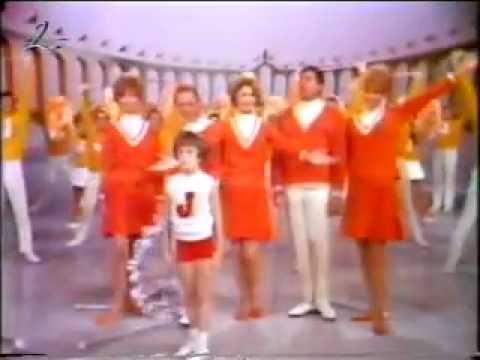

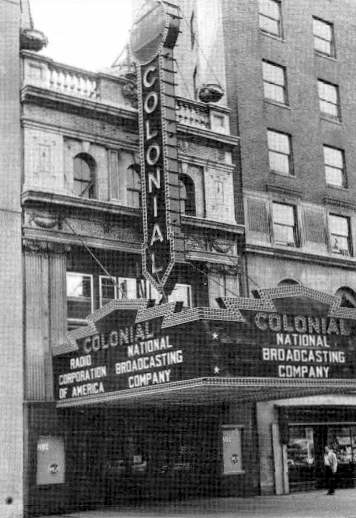

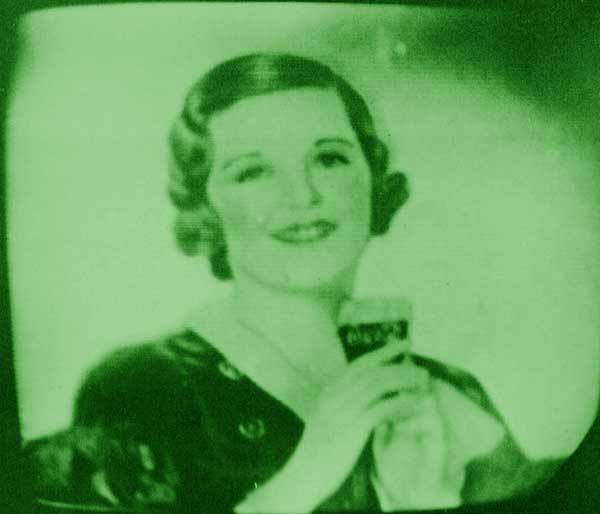

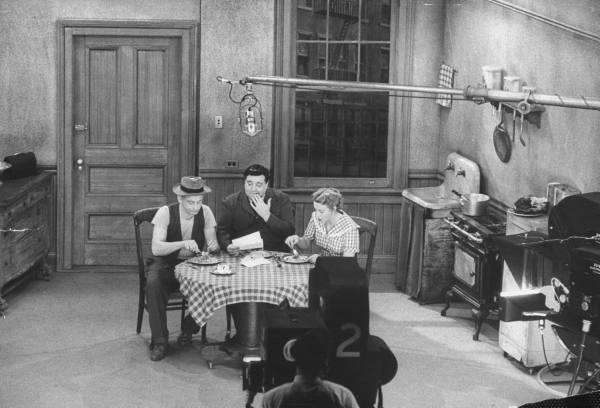

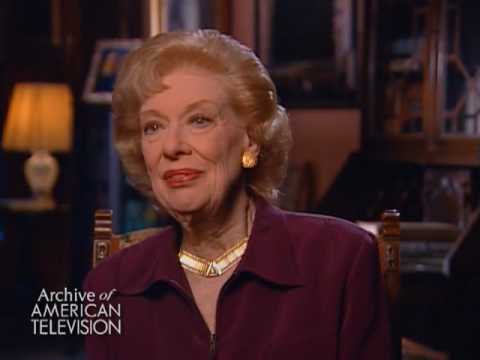

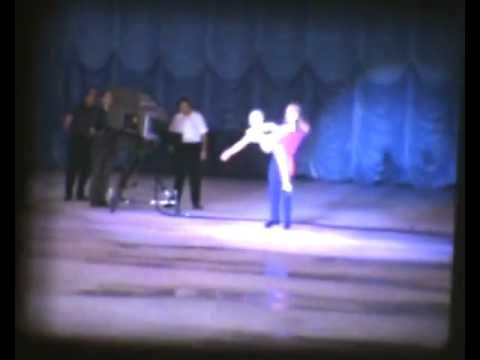





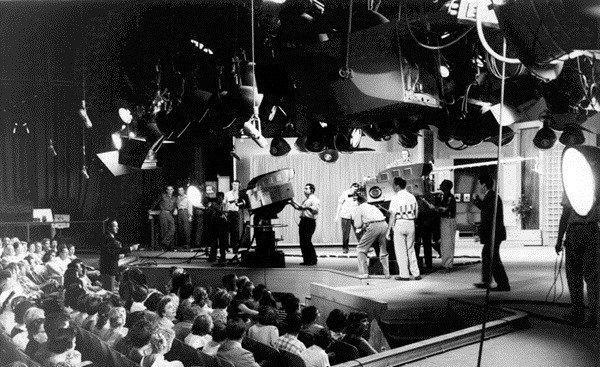

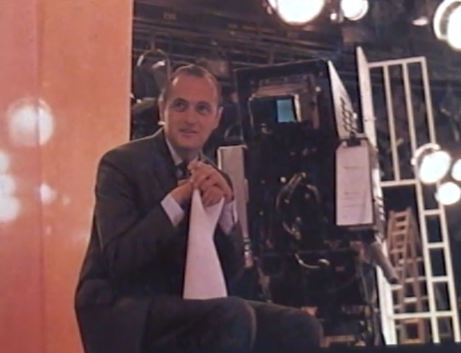

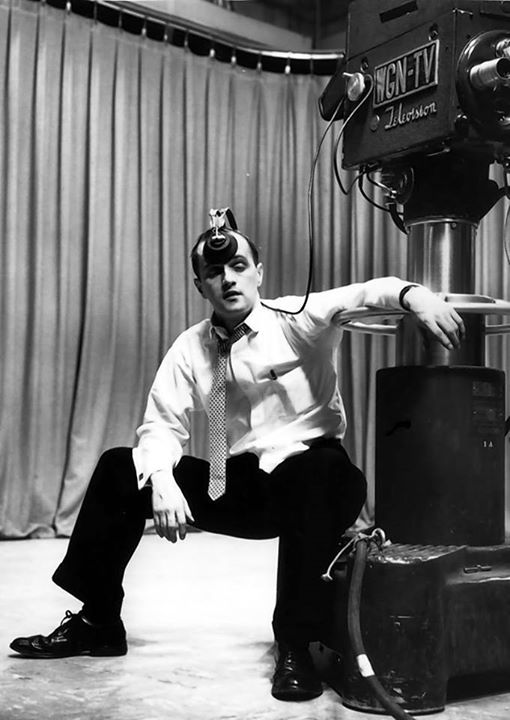

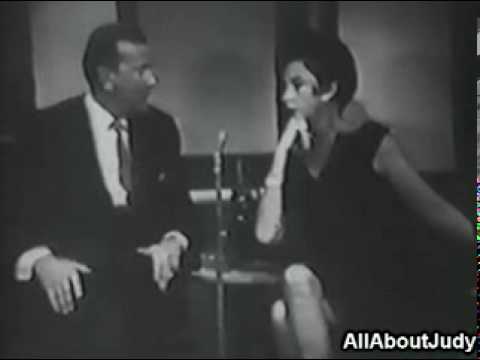



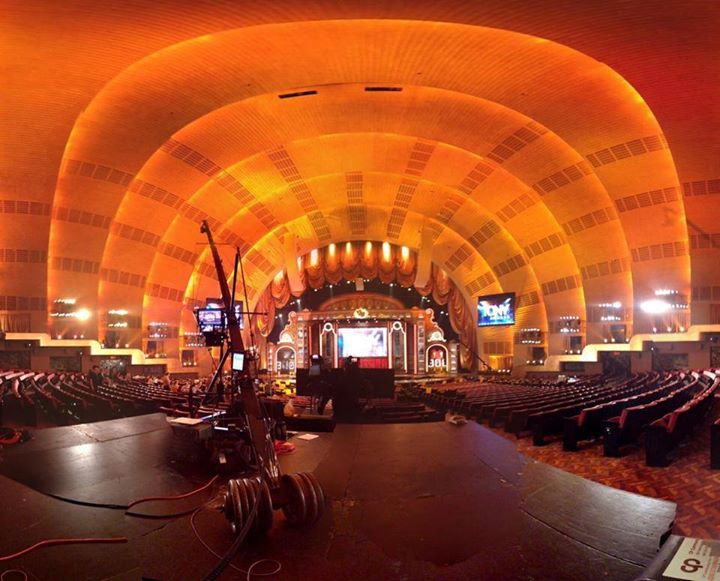

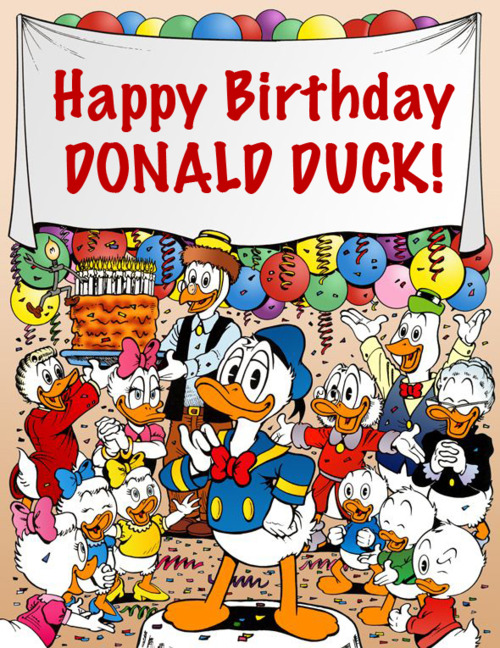

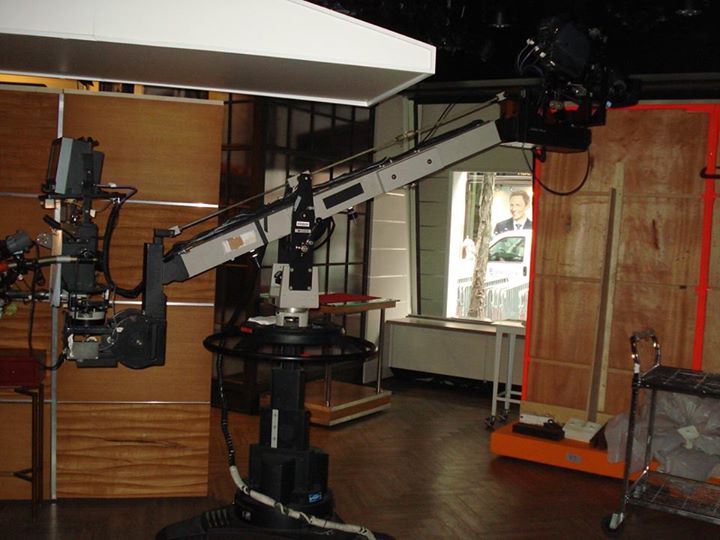



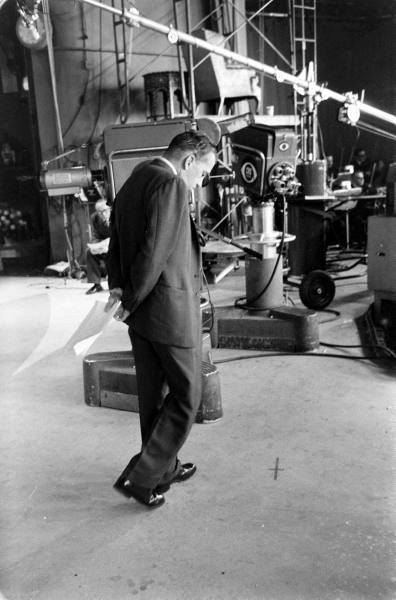

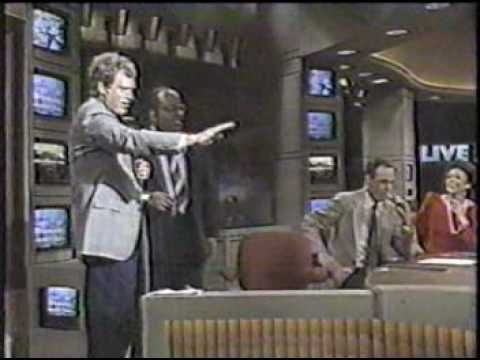

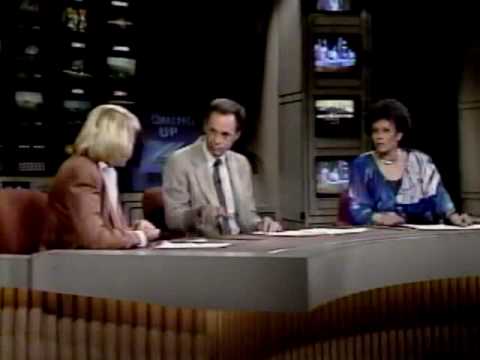

Posts in Category: TV History
Page 77 of 136
« Previous
1
2
3
4
5
6
7
8
9
10
11
12
13
14
15
16
17
18
19
20
21
22
23
24
25
26
27
28
29
30
31
32
33
34
35
36
37
38
39
40
41
42
43
44
45
46
47
48
49
50
51
52
53
54
55
56
57
58
59
60
61
62
63
64
65
66
67
68
69
70
71
72
73
74
75
76
77
78
79
80
81
82
83
84
85
86
87
88
89
90
91
92
93
94
95
96
97
98
99
100
101
102
103
104
105
106
107
108
109
110
111
112
113
114
115
116
117
118
119
120
121
122
123
124
125
126
127
128
129
130
131
132
133
134
135
136
Next » 

Jerry Lewis and The Laughing Cameraman…1967
On June 13, 2014
- TV History, Viewseum
Jerry Lewis and The Laughing Cameraman…1967
From NBC Burbank, here’s a great bit with Jerry singing “Witchcraft” and a professional laugher behind a crane mounted TK41. There is another version of this with the TK41 on a pedestal done on another episode of his NBC show. If anyone has a link to that, please share it with us. Thank you and enjoy. -Bobby Ellerbee
Answer To An Interesting Question…
On June 12, 2014
- TV History
Answer To An Interesting Question…
A while back, someone asked me how the signals from NBC’s many studios around NYC got back to 30 Rockefeller Plaza. Microwave or coaxial cable?
Turns out it was usually coaxial cable. The one exception was NBC’s Uptown Studio at 106th Street. Most of the other theaters, like the Hudson and Ziegfeld were low rise buildings near Broadway and didn’t have clear paths so they were all coax. The Uptown though was 11 stories and did have a clear path.
The Uptown had dual capacity and relied mostly on the coax, but since so much programing was coming from there, the engineers felt that it would be good to have a microwave back up, just in case.
CBS and ABC also used coaxial cable to link their many remote studios back to master control. Thanks to Gady Reinhold at CBS for the answer.
“Colored Television”…
On June 12, 2014
- TV History
“Colored Television”…
Did you know that up till about 1932, the pictures on cathode ray tubes were green…like an oscilloscope screen? Me either, but there it was in an article on the history of the Empire State Building antenna from 1967.
Quoting the article; “At that time, the tubes had green fluorescent screens, since the white phosphor later used for black-and-white television had not yet been developed.”
This was in relation to NBC’s first experimental television transmissions from the first Empire State antenna on December 22, 1931. The first experimental transmission from the Empire State Building were 120-line pictures using mechanical scanning of both film and live subjects.
The live subject would have most definitely included extended periods of Felix The Cat spinning on a turntable. As I reported in the NBC Studio History Series earlier in the year, Felix, the mechanical camera and the transmitter were in the Roof Garden Studio of The New Amsterdam Theater on 42nd Street and were 60 line transmissions received on these green tinted screens.
It would be interesting to know when the white phosphor process began. I’m looking but as yet, no luck, but I did find this rare photo from 1932. If anyone has any information on this, please share it with us
‘The Honeymooners’…The Classic 39
On June 12, 2014
- TV History
‘The Honeymooners’…The Classic 39
The first Honeymooners sketch was done live, October 5, 1951 as part of Dumont’s ‘Cavalcade Of Stars’ show which Jackie Gleason had become the host of in June 1950. It was only six minutes long, but started something that lasts till this day.
Gleason’s Dumont show did quite well and CBS noticed! They brought Jackie and company to Studio 50 in July of 1952 and the rating soared on the Saturday night, hour long, live broadcast. As Honeymooners sketches became more popular, they got longer and could run up to 30 or 45 minutes.
In 1955, Gleason told CBS he wanted take a break from the live show, but wanted to continue a half hour version of the Honeymooners. Gleason still had friends at Dumont and they had told him about the new Dumont Labs Electronicam that shot live video and 35 millimeter film simultaneously.
Gleason had been impressed by the way ‘I Love Lucy’ was produced and wanted to do film, but keep the live aspect of the show. The Electronicam was perfect for this. A kinescope recording was made of the live presentation, which was switched like a regular live show, but in editing, if a camera had a better angle on a scene, they were able to use that instead of the original shot.
All 39 episodes of The Honeymooners were filmed at the DuMont Television Network’s Adelphi Theater at 152 West 54th Street in Manhattan, in front of an audience of 1,000. Episodes were never fully rehearsed, as Gleason felt that rehearsals would rob the show of its spontaneity. The shows were shot on Saturday nights at 8 and by 9, Jackie was headed to Toots Shores or 21.
Gleason and company went back to live television in 1956 because Jackie felt the quality of the longer Honeymooners scripts was petering out. The 39th and last original episode aired on September 22, 1956. In explaining his decision to end the show, Gleason said, “the excellence of the material could not be maintained, and I had too much fondness for the show to cheapen it”. One week after The Honeymooners ended, ‘The Jackie Gleason Show’ returned live to Studio 50 on September 29. Soon after, so did The Honeymooners sketches. Enjoy and share.


Life With Jackie Gleason…Joyce “Trixie Norton” Randolph Interview
On June 12, 2014
- TV History
Life With Jackie Gleason…Joyce “Trixie Norton” Randolph Interview
This is a tight, well edited 12 minute piece on what life was like
on ‘The Jackie Gleason Show’, ‘The Honeymooners’, and more! It starts with how Joyce got the part on Gleason’s Dumont show and goes all the way till the end and it’s fascinating!
On October 21, Joyce Randolph will turn 100. She is the only surviving member of one of the world’s most famous casts of television characters. Enjoy and share!
https://www.youtube.com/watch?v=STtklt1EkU4
See “Honeymooner’s” co-star Joyce Randolph’s complete interview at http://emmytvlegends.org/interviews/people/joyce-randolph Edited for the Archive of Americ…


Rare Classic! Ed Sullivan Taping Holiday On Ice With TK41s
On June 12, 2014
- TV History
Rare Classic! Ed Sullivan Taping Holiday On Ice With TK41s
Be aware there are two video links in this post. The embedded link (at the bottom of this post) is great home movie footage of the taping at Madison Square Gardens in 1967. This link is to the air version of the show on air, so you can see how it came out. #t=94″ target=”_blank”>https://www.youtube.com/watch?v=yjSsctTLovY #t=94
I notice Producer Bob Precht and Floor Manager Eddie Brinkmann are wearing different clothes in later shots, but I think this was all shot in one day. They may have changed after rehearsal and cut ins when an audience was brought in. I understand part of the budget included spiked golf shoes for the crew so they could walk on the ice without slipping.
Although the RCA TK41s have CBS Color logos, they are not from a CBS mobile unit, as no one there remembers a company owned color mobile unit before the Norelco cameras came along. The cameras are most likely from a truck rented from either WOR or Video Tape Center.
I see Director Tim Kiley at the front of this and I think I see AD John Moffitt too. Producer Bob Precht is the tall blond man. At around 4:20, there is a very familiar looking man in glasses. Do you know who that is? I think he is a comedian, but I can’t call his name. Enjoy and share.
https://www.youtube.com/watch?v=afvi0gitInQ
Holiday On Ice 1967 (U. S. A)….At Madison Square Garden for afternoon taping for The Ed Sullivan Show….cameos of Lighting Director Don Watson, Company Ma…
Television’s First Major League Baseball Game
On June 11, 2014
- TV History
Television’s First Major League Baseball Game
The first ever Major League Baseball game was televised on August 26, 1939 on experimental station W2XBS, which is now WNBC. With Red Barber announcing, the Brooklyn Dodgers and the Cincinnati Reds played a doubleheader at Ebbets Field. The Reds won the first, 5–2 while the Dodgers won the second, 6–1.
Barber called the first game on NBC Radio and moved to TV for the second game which he did without the benefit of a monitor and with only two cameras capturing the game. One camera was close to Barber who had to sit in the stands behind home base. The other was on the first base side up high. During the game, Red’s headset also went out so he was winging more than just the play by play action.
At the time, the New York World’s Fair was in full swing, as was RCA and NBC’s first big television push. Including the sets RCA had installed at the fair and around town, there were only about 400 receivers in the NYC area.
On September 15, 1938, NBC christened it’s new two truck mobile unit on the air by televising man on the street interviews at 30 Rockefeller Plaza. One unit was the camera truck and the other, the transmitter truck.
The first-ever televised baseball game had actually come four months earlier on May 17, 1939. That was a college game between Princeton and Columbia; Princeton beat Columbia 2–1 at Columbia’s Baker Field. The contest was aired on W2XBS and was announced by Bill Stern. Stern almost did not make the opening pitch of that game as he rushed home to get his hair piece.
Broadcasting baseball on the radio was something Stern had done for years and never needed to “look spiffy”. but since General Sarnoff would be watching, he decided he’d better take his hat off for the broadcast. When he did that for the camera before the game, he realized he was missing something he usually wore in the NBC studios doing his daily sport shows. Wonder if Willard Scott ever did that?


Dobie Gillis…An Interesting Backstory
On June 11, 2014
- TV History, Viewseum
Above is a rare pilot pitch made for introducing the show to networks and sponsors. There are some interesting new faces in this including Tuesday Weld, Yvonne Craig and a then unknown actor named Bob Denver. There are also some familiar faces as Dwayne Hickman introduces us to not only the characters, but to Max Shulman…author and creator of Dobie Gillis.
Max Shulman’s first Dobie Gillis short stories were printed in 1945, and a short story compilation, ‘The Many Loves of Dobie Gillis’. was published in 1951. Aside from Dobie and his parents, Zelda Gilroy was the only other character from the books directly adapted to the series as a regular or recurring character.
Metro-Goldwyn-Mayer produced the first media adaptation in 1953 as ‘The Affairs of Dobie Gillis’, a black-and-white musical film starring Debbie Reynolds, Bob Fosse, and Bobby Van as Dobie Gillis. Following its release, Shulman set about the task of bring Dobie Gillis to television. An initial pilot was produced by George Burns (yes, THAT George Burns) in 1957, with his son Ronnie Burns starring as Dobie.
After this pilot did not sell, Shulman took Dobie Gillis to 20th Century Fox Television. Fox asked Shulman to reduce the Dobie character’s age from 19 to 17, making him a high-school student instead of a college student and an age peer of Ricky Nelson from ‘The Adventures of Ozzie and Harriet’ and Wally Cleaver from ‘Leave It to Beaver’. Shulman agreed to the change.
First pitched to and rejected by NBC, ‘The Many Loves of Dobie Gillis’ was greenlit by CBS in April of ’59 and aired from September 29, 1959 – June 5, 1963. The show was filmed with two cameras, a method that producer and director Rod Amateau had learned while working on The George Burns and Gracie Allen Show. Fox turned out one episode of Dobie Gillis a week, working from May to December of each year. Dwayne Hickman’s fourth-wall breaking monologues were saved for the end of the production of each episode; their length resulted in Hickman requesting and getting a teleprompter to read them from for season two forward.
The show was not filmed before a live studio audience, but during the first season, a live audience viewed each episode and provided its laugh track. After that, a standard laugh track provided by Charles Douglass (and his magical black box) was used.
A total of 147 episodes of the show were produced: 39 the first season, and 36 for each of the following seasons. I remember watching this as a kid, and seems others did too! Gary Marshall said ‘Happy Days’ was heavily influenced by Dobie, as was ‘Scooby Doo-Where Are You’, from Hanna Barbera. What do you remember about this show? Enjoy and share!
‘The Bob Crosby Show’…CBS Daytime, 1953-1957
On June 11, 2014
- TV History
‘The Bob Crosby Show’…CBS Daytime, 1953-1957
In the photos, we see RCA TK40s and 41s on the Crosby Show which was done Monday thru Friday from Television City’s Studio 33. Like most TVC shows, it was usually done in black and white, but every couple of months or so, they would broadcast a day or two, or a week in color. Studio 43 was equipped with RCA TK40A color cameras in 1954, with cables allowing any of the original four studios to use those cameras. In 1956, Studio 41 was equipped with RCA TK41s.
Jack Narz was usually the announcer for the show, but in the clip and the photo, we see different announcers. That’s Tom Kennedy in the photo with Crosby, but I don’t recognize the announcer in the video.
I think this show aired between 1 and 3 PM in the east, but since this is in the pre videotape days, it had to be done live in LA in the morning and was kinescoped for the west coast playback. Here is a sample:
The attached show clip was done in ’53. These are the other shows that were being done live from Television City that month, and the studios they came from.
ART LINKLETTER’S HOUSE PARTY 41
LIFE WITH FATHER 43
LUX VIDEO THEATER 43
MEET MILLIE 31
MEL ALLEN 31
MY FAVORITE HUSBAND 33
MY FRIEND IRMA 31
PLACE THE FACE 41
RADIO & RECORDS EVENT 31
THAT’S MY BOY 33
THE BOB CROSBY SHOW 33
THE RED SKELTON SHOW 31
Newhart And Television…
On June 10, 2014
- TV History
Newhart And Television…
In the photo, we see Bob with an RCA TK41 at NBC Burbank. Notice the lens turret handle on the back of the camera is at a kind of 2 o’clock position which is an easy way to “cap” the camera to save the three very expensive IO tubes inside. There are four lens positions on the turret and lock in with the handle at the 12, 3, 6 and 9 o’clock positions. At the link is a few rare seconds of ‘The Bob Newhart Show’ on NBC in 1961.
There’s too much to tell about Bob Newhart’s sitcoms, and we’ll take those up at another time. This story is more about Bob’s rise to fame via television and the many shows he appeared on before his sitcom days at CBS, and we’ll start at NBC Burbank.
Newhart’s success in stand-up led to his own NBC variety show in 1961, ‘The Bob Newhart Show’. The show lasted only a single season, but earned Newhart a Primetime Emmy Award nomination and a Peabody Award. The Peabody Board cited him as:
“… a person whose gentle satire and wry and irreverent wit waft a breath of fresh and bracing air through the stale and stuffy electronic corridors. A merry marauder, who looks less like St. George than a choirboy, Newhart has wounded, if not slain, many of the dragons that stalk our society. In a troubled and apprehensive world, Newhart has proved once again that laughter is the best medicine.”
In the mid-1960s, Newhart appeared on The Dean Martin Show 24 times, and on The Ed Sullivan Show eight times. He appeared in a 1963 episode of ‘The Alfred Hitchcock Hour’, “How to Get Rid of Your Wife”, and on ‘The Judy Garland Show’. Newhart guest-hosted ‘The Tonight Show Starring Johnny Carson’ 87 times, and hosted ‘Saturday Night Live’ twice, 15 years apart (1980 and 1995).
In addition to stand-up comedy, Newhart appeared as a character actor on ‘Bob Hope Presents the Chrysler Theatre’, ‘It’s Garry Shandling’s Show’ and he appeared as Dr. Bob Hartley on ‘Murphy Brown’. He also appeared as himself on ‘The Simpsons’, and as a retired forensic pathologist on ‘NCIS’.
Newhart guest-starred on three episodes of ‘ER’, for which he was nominated for a Primetime Emmy Award, and on ‘Desperate Housewives’. In 2013 he appeared on ‘Committed’ and was in an episode of the sixth season of ‘The Big Bang Theory’, for which he was awarded a Primetime Emmy Award, and several episodes of the seventh season.
‘Password’ welcomed Bob many times, as did other game shows which are too numerous to mention.
Classic! Bob Newhart…How He Became His Own Straight Man
On June 10, 2014
- TV History
Classic! Bob Newhart…How He Became His Own Straight Man
In the clip, you’ll see Bob doing what made him famous…being his own straight man in one of his famous one sided telephone calls. In the photo we see Bob at Chicago’s WGN in 1959.
Chicago native, Bob Newhart was drafted into the Army and served in the Korean War as a personnel manager until being discharged in 1954. After the war, Newhart got a job as an accountant for United States Gypsum. He later claimed that his motto, “That’s close enough,” and his habit of adjusting petty cash imbalances with his own money shows he did not have the temperament to be an accountant.
In 1958, Newhart became an advertising copywriter for Fred A. Niles, a major independent film and television producer in Chicago. It was here that he and a co-worker would entertain each other with long telephone calls about absurd scenarios, which they would later record and send to radio stations as audition tapes. When his co-worker ended his participation, Newhart continued the recordings alone, developing the shtick which was to serve him well for decades.
A disc jockey, Dan Sorkin, who later became the announcer-sidekick on his NBC series, introduced Newhart to the head of talent at Warner Bros. Records, which signed him in 1959–only a year after the label was formed–based solely on those recordings. He expanded his material into a stand-up routine which he began to perform at nightclubs.
His 1960 comedy album, ‘The Button-Down Mind of Bob Newhart’, went straight to number one on the charts, beating Elvis Presley and the cast album of ‘The Sound of Music’. It was the first comedy album to make #1 on the Billboard charts. ‘Button Down Mind’ received the 1961 Grammy Award for Album of the Year. The album peaked at #2 in the UK Albums Chart. Newhart also won Best New Artist, and his quickly released follow-up album, ‘The Button-Down Mind Strikes Back’, won Best Comedy Performance – Spoken Word that same year.
Newhart became famous mostly on the strength of his audio releases, in which he became the world’s first solo “straight man”. This is a seeming contradiction in terms: by definition, a straight man is the counterpart to a more loony comedic partner. Newhart’s routine, however, was simply to portray one end of a conversation (usually a phone call), playing the straightest of comedic straight men and implying what the other person was saying. In the clip, he does just that! Enjoy and share! .


Happy Birthday! Judy Garland…Born June 10, 1922
On June 10, 2014
- TV History
Happy Birthday! Judy Garland…Born June 10, 1922
Francis Gumm would have been 92 today, but she lives on in millions of hearts around the world. Although the video quality is not great, here is a classic appearance by Judy with Jack Paar on ‘Tonight’ early 1962 in NBC’s Studio 6B. As always, she is wickedly funny and superb as a storyteller. Enjoy and share!
http://www.youtube.com/watch?v=fOPwy39u1RI
This interview is a fan favorite. Judy was in great shape, relaxed and very funny. We can also see what a great storyteller she was when she talks about grow…


Backstage At ‘The Tonight Show With Johnny Carson’
On June 10, 2014
- TV History
Backstage At ‘The Tonight Show With Johnny Carson’
In the final two weeks of Carson’s thirty years as host, they did a lot of things they had never done before, including this first and only look at how the show is put together. This segment aired on the final show and part of it is in the video of that show I’ll be posting next. This was shot on April 9, 1992 and includes a visit from Stevie Wonder singing one of Johnny’s favorite songs. Among the TK47s, we’ll see Johnny’s last appearance as Art Fern. The Carson era ended May 22, 1992 in a show with no guests, but there’s more on that in the next post. Enjoy and share!
http://www.youtube.com/watch?v=NSDcQkpb9sE
A Behind the Scenes Look at Production of The Tonight Show with Johnny Carson. Carson Hosted the Popular Show From 1962 Until Turning Over the Set to Jay Len…
The Tony Awards Opening…FANTASTIC Steadicam Shot
On June 10, 2014
- TV History
The Tony Awards Opening…’Let’s Go To The Hop’
At the link is a quick backstage look at the end of host Hugh Jackman’s opening number, a hopping tour of Radio City Music Hall. The whole thing was beautifully shot by Steadicam operator Tore Liva with help from his trusty utility man.
In the photos, we see two of the three jibs used for the show, a 40 footer center house, a 24 footer left balcony and a 16 footer on the right side of the stage. Our friend Rob Balton’s company Camera Moves was there along with at least a dozen other cameras, including a few that were pedestal mounted in center house. A great job by everyone. As exciting as the Emmy and Oscar broadcasts are, the Tony shows are in a league of their own.
Happy 80th Birthday Donald! “Born” June 9, 1934
On June 9, 2014
- TV History
Happy 80th Birthday Donald! “Born” June 9, 1934
http://youtu.be/A5dowCyaP7I?t=1m58s
At the link is Donald Duck’s debut! His first ever screen appearance came on the date of this ‘Silly Symphony’ cartoon called ‘The Little Wise Hen’ from Walt Disney Studios. It’s cued to his entrance.
The Donald Duck character was created by Walt Disney when he heard Clarence Nash doing his “duck” voice while reciting ‘Mary Had a Little Lamb’. Disney wanted a character that was more negative than Mickey Mouse, so the bad-tempered Duck was born. Nash voiced the character from 1934 to 1983, training Tony Anselmo to take over and Tony has been playing the voice of Donald since then. By the way, his full name is Donald Fauntleroy Duck!
A special microphone, The Neumann TLM-170, was used to record Donald’s voice. Preferred for its warmth, this microphone also rounds out the high tones and smoothes the “splat” in Donald’s voice.
The renowned early illustrators of Donald Duck were Al Taliaferro, Carl Barks, and Don Rosa. Donald Duck first appeared as a drawing in a May 1934 issue of “Good Housekeeping” magazine promoting the June film release of ‘The Wise Little Hen’.
Did you know Donald won an Oscar? It was for the 1943 animated short ‘Der Feuhrer’s Face’, which was originally titled ‘Donald Duck in NutziLand’. The anti-Nazi cartoon begins with music from Wagner’s comic opera Die Meistersinger von Nürnberg and also features Groucho Marx’s singing. Happy Birthday Donald! Oh Boy!
A Great Look Inside ‘Today’, NBC Studio 1A
On June 8, 2014
- TV History
A Great Look Inside ‘Today’, NBC Studio 1A…Viera Sendoff Video
https://www.youtube.com/watch?v=IwtAScZzhFg
At the link is a clip from Meredith Vieira’s last day as a ‘Today’ co host. As Journey’s “Don’t Stop Believing” plays, a single camera goes with Merideth, first from the studio downstairs into the 1A control room and then up and out onto the plaza.
Until I visited last month, I couldn’t really “get” the lay out and relationships to what is where, but if you’ve ever wondered, this is about as good a look as you’ll get. There is a second floor studio above the main set which I think is mostly used for cooking segments now, but before the news nooks were built a few years back in 6C, that was were Lester Holt did the weekend news shows.
Having seen the cast and crew of this show in action, I have to tell you that action is the key word. From 7 till 9 every morning, they are in and out and back and forth from the studio to the plaza more than a jack in the box. It takes a lot of coordination and pros to pull this off and they do it like no one else! Even in the rain.
Outside, it’s all handheld, Steadicam and jib and inside there are four ped cameras, a Merlin (center photo below) and a hand held. I think there must be at least eight camera operators and that many or more utility people, plus a small army of producers and floor directors.
By the way, Meredith will be back in the fall with her own syndicated show that will be done in NBC’s Studio 6A, on a set that resembles Vieira’s home, with her actual furniture and family photos, Enjoy and share!
Some Little Known Early History Of ABC Radio & Television
On June 7, 2014
- TV History
Some Little Known Early History Of ABC Radio & Television
The address on this letterhead is not the only surprise you are in for! I had heard that ABC had offices and facilities at NBC’s headquarters, but now we have a piece of that history thanks to Steve Finkelmeyer.
As mentioned in today’s first post, ABC got it’s start when NBC was forced to sell it’s Blue Network and there will be more on that later, but first, a note on this 30 Rock location. On July 30, 1943 NBC announced the sale of the Blue Network to ABC. Shortly after, ABC took over the Blue space, which was shared with the NBC Red network space inside 30 Rock. It’s not know exactly when ABC was able to move to a new location, but Frank Merklein who joined NBC in 1947 has told me that they were there for at least a year after he started and were on the third floor. There was a similar shared location at NBC in Los Angeles.
Before we get to some interesting ABC Television history, I have to wonder about the relationship of the network’s first phone number (as seen on the letterhead), and their now famous “Circle 7” O & O station logo. I’ll bet there is a connection and will try and find it, but if anyone knows, please share that with us.
The new American Broadcasting Company had it’s hands full when it took over NBC Blue in radio, and although TV was a must too, ABC was generally slow to move into television broadcasting. After the war freeze was lifted in late 1945, they won approval to build five television stations; the first, WJZ-TV in New York was completed in the summer of 1948. WJZ-TV was followed by stations in Chicago and Detroit later in 1948; and San Francisco and Los Angeles during 1949–all five stations were assigned to broadcast on channel 7.
Interestingly, until those stations were built, ABC TV had to lease time and studio facilities from other stations including the DuMont network’s New York flagship WABD, as well as other stations in Philadelphia (WPTZ) and Washington.
Ed Sullivan’s Last Show…Clearing Up Some History
On June 7, 2014
- TV History
Ed Sullivan’s Last Show…Clearing Up Some History
Over the past week, several sites have reported that Ed Sullivan’s last show was on June 6, 1971. This is partly true, but is not the whole story. Here’s the rest of that very sad tale.
As I understand it, CBS announced the cancellation of the show on Tuesday, March 30, 1971. When Sullivan took to the stage that previous Sunday night, March 28th, he did not know that would be his last show, but it was. They did not even allow him to do a farewell show. Having been on air talent for many years, I can tell you this is unfortunately “how it’s done”. Most employers that fire talent feel that another chance on the air to say goodby also opens the door for possible triads against them, so, they do it this way. It’s quite cruel.
Sullivan was furious and very hurt by this and really never forgave CBS for not letting him hit the 25 year mark and for the shabby way they parted ways. After Ed Sullivan’s last live-to-tape show, reruns from that twenty third season ran till June 6th. The last original Sullivan show telecast (Episode 1068) was on March 28, 1971 with guests Melanie, Joanna Simon, Danny Davis & The Nashville Brass, and Sandler and Young.
The last show to air on June 6, 1971 was episode 20 from February 7, 1971 with Gladys Knight & the Pips singing “If I Were Your Woman” & “Bridge Over Troubled Water”. Jerry Vale sang “I Want To Make It With You”, Caterina Valente sang “The Girl from Ipanema” and Peter Nero played the theme from “Love Story” on his piano. Sid Caesar & Carol Channing performed a scene from the play “Four on a Garden”. For comic relief, there was Robert Klein and Pat Henry. The End. Literally.


Letterman Takes Over WNBC ‘Live At 5’ Weather With Al Roker
On June 7, 2014
- TV History
Letterman Takes Over WNBC ‘Live At 5’ Weather With Al Roker
While Jack Cafferty and Company are fresh on our minds from the last post, here’s a rare clip of Dave walking over from 6A to 6B and having a hard time getting in. Once inside, the old weather man in Dave takes over…sort of. Enjoy and share!
http://www.youtube.com/watch?v=V-EsiPs6pes
Dave invades local news show ‘Live at 5’ to do a weather report with Al Roker. Aired 2/18/88.


WNBC Live at Five 1987
On June 7, 2014
- TV History
You’ve Probably Never Seen This, And Will Probably Never Again!
Ever seen a newscast with a live announcer? We’ll get ready! Oh…and this is not just any live announcer…it’s Don Pardo!
You’ll see Don at the start, again at 1:18 where he has a rare bit of a stumble and again at 6:57 at the close. For those that saw Jack Cafferty on CNN with Wolf Blitzer for many years and wondered where he came from, here’s your answer…WNBC. Jack has a very characteristic intro to the weather segment with Al Roker in this great clip from 1987. Enjoy and share!
Page 77 of 136
« Previous
1
2
3
4
5
6
7
8
9
10
11
12
13
14
15
16
17
18
19
20
21
22
23
24
25
26
27
28
29
30
31
32
33
34
35
36
37
38
39
40
41
42
43
44
45
46
47
48
49
50
51
52
53
54
55
56
57
58
59
60
61
62
63
64
65
66
67
68
69
70
71
72
73
74
75
76
77
78
79
80
81
82
83
84
85
86
87
88
89
90
91
92
93
94
95
96
97
98
99
100
101
102
103
104
105
106
107
108
109
110
111
112
113
114
115
116
117
118
119
120
121
122
123
124
125
126
127
128
129
130
131
132
133
134
135
136
Next »